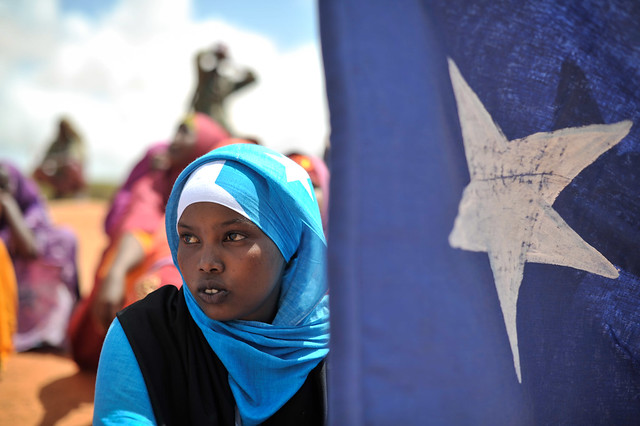10 Interesting Facts about African Flags
The 54 countries of Africa have their own flag that has a place of pride in the hearts of African people. Below are the 54 African countries and flags along with 10 interesting facts about African flags.



10 African Flags Facts
Established in 2002 The African Union (AU) is an intergovernmental organization to promote unity among African countries, it's flag does not replace each individual African countries flag.
10 Interesting Facts about the National Flags of Africa
- The most frequently used colors are green, yellow, red and black.
- The flag of São Tomé and Príncipe green refers to the plentiful vegetation of the country, while the yellow stands for the tropical sun and cocoa, a key agricultural crop for the nation. The red evokes the "struggle for independence", as well as equality. The two stars on the yellow band represent the two islands that make up the country.
- The flag of Rwanda was adopted on October 25, 2001, the blue band represents happiness and peace, the yellow band symbolizes economic development, and the green band symbolizes the hope of prosperity. The sun represents enlightenment.
- South Africa’s flag is rectangular; it is one and a half times as long as it is wide having horizontal bands of red (on the top) and blue (on the bottom), of equal width, separated by a central green band which splits into a horizontal "Y" shape, the arms of which end at the corners of the hoist side (and follow the flag's diagonals). The Y embraces a black isosceles triangle from which the arms are separated by narrow yellow bands; the red and blue bands are separated from the green band and its arms by narrow white stripes.
- The flag of the Central African Republic was adopted on December 1, 1958. Barthélemy Boganda, the first president of the independent territory of Oubangui-Chari, who believed that “France and Africa must march together”, designed it. Therefore, he combined the blue, white and red of the French tricolor and the Pan-African colors red, green and yellow.
More interesting facts about African flags.
- The flag of the Union of the Comoros contains of a white crescent with four white stars inside of a green triangle. The flag has four stripes, representing four islands of the nation: yellow is for Mohéli, white is for Mayotte (claimed by Comoros but administered by France), red is for Anjouan, and blue is for Grande Comore. The star and crescent symbol stands for Islam, which is the nation's major religion.
- The flag of Egypt is tricolor consisting of the three equal horizontal red, white, and black bands of the Arab Liberation flag dating back to the Egyptian Revolution of 1952. The flag bears Egypt's national emblem, the Eagle of Saladin centered in the white band.
- The flag of Botswana is a flag consisting of a light blue field cut horizontally in the center by a black stripe with a thin white frame; it is one of the few African flags that utilize neither the colors of the Pan-Africanist movement nor the colors of the country's leading political party.
- The flag of Zimbabwe consists of seven even horizontal stripes of green, gold, red and black with a white triangle containing a red 5-pointed star with a Zimbabwe Bird. The present design was adopted on 18 April 1980, when Zimbabwe won its independence from the United Kingdom.
- The flag of Sierra Leone is a tricolor consisting of three horizontal green, white and blue bands. It was adopted in 1961, Sierra Leone's independence year.






